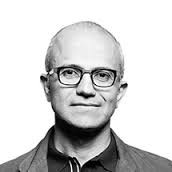Think of this as Volume 18, Number 7 of the newsletter I have written weekly since March, 1997. Enjoy.

The computing middle class of PCs and servers were being replaced on the one hand by cheap devices and on the other hand by clouds delivering software and services.
Recent events have shown that, from the U.S. perspective, this barbell has only one side.
That side is the cloud.


When it comes to mass manufacturing in electronics, we can’t compete. Anything that requires heavy use of manual labor is going to the place with the lowest hand labor costs. We need to move on, and move up the stack of skills.
All this has created, even accelerated, the most important business trend of the year, which I call the cloud gold rush.
During the last quarter Google put over $2.25 billion into new server farms. Amazon spend nearly the same amount. Microsoft, IBM, Facebook and Apple are all under pressure to respond. They will, because they face a choice between either spending billions on their own server networks or finding themselves, two years from now, using someone else’s, and paying that competitor for the privilege of survival.

Over the next two years this is all great news. It means that prices for cloud infrastructure will continue coming down. It means ad-based Web services built on cloud infrastructure can plan for enormous growth without seeing an explosion in costs. All of this means that, despite falling ad rates, these services should continue to make money.

The investments being made in core delivery technology, both in the form of new server farms and content delivery networks (like the one Netflix already has and Apple is building) are going to make TV appear as a relatively slow file type over time, just like telephony is now. The pressure of the cloud service providers, their need and desire to reach customers, will not allow the last-mile providers to get the monopoly rents they think they’re in for. Those companies will either yield through the market, or they will yield politically. But they will yield.
The problem with the cloud gold rush is that every boom is followed by a bust, and this one will be no different. At some point cloud server capacity will dramatically exceed demand, to the point where no matter how little it costs, building new capacity becomes uneconomic.

What’s funny about the next recession is that it will be the product of abundance, not scarcity. Energy abundance and Internet abundance, when combined, are going to remake our world. But there will be some economic pain along the way, an immense bulge of deflation that policymakers will have to answer. The likelihood of leaders bumbling through it, rather than acting decisively, is high because they’ve seldom acted decisively before, and because this problem will be materially different from those that came before.

But as usual, it’s going to be a bumpy ride. And the cloud gold rush is just one indication of how bumpy it will be. At least one company, and probably more, that now looks impregnable is going to go completely under some time in the next three years. Will it be IBM? Hewlett-Packard? Dell? All three? And who else?
I can’t answer that. I see trends, not specifics. What happens to any company depends heavily on what its leaders do in response to constant, accelerating change. Can Satya Nadella ride the current changes to new prosperity for Microsoft? I would say the odds are in his favor, but there’s no certainty, anywhere. Not really.
That’s what gives life its flavor.










